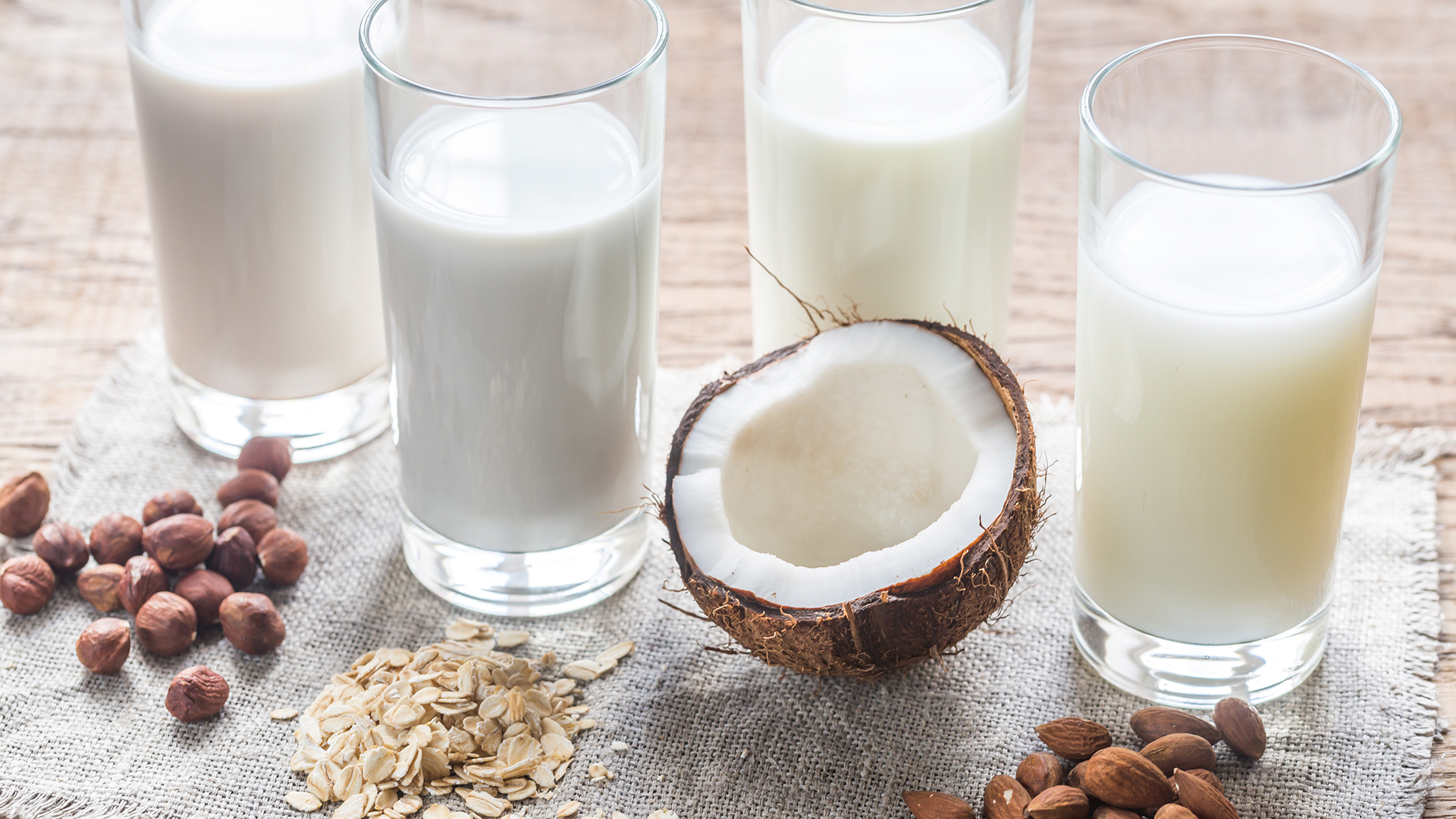Should Nondairy Beverages Be Called ‘Milk?’
UC Davis researchers discuss what makes something milk — technically and in the eyes of the consumer — now that other varieties are on the food scene.This pumpkin season, we were offered the classic pumpkin-spiced lattes at coffee shops and the new pumpkin-flavored nondairy oat beverage created by Trader Joe’s. While Trader Joe’s did not call its product “milk,” many nondairy beverages use the term in their marketing — like Oatly’s oatmilk, Milkademia’s macadamia nut milk, NotCo’s NotMilk and the classic Silk Soymilk. But how did we go from “got milk?” to NotMilk, and is the change really that significant?
What makes “milk” milk?
The Food and Drug Administration sets legal standards of identity for many food products and defines traditional cow’s milk as “the lacteal secretion, practically free from colostrum, obtained by the complete milking of one or more healthy cows.” This restricts “milk” to being defined as only coming from cows during a specific period in their milk production cycle.
“Cows produce colostrum in the first few days of lactation, so by the FDA’s rule this can’t even be called milk,” explained J. Bruce German, a distinguished professor in the Department of Food Science and Technology and a milk researcher.
And no standards exist for milk that is produced by other mammals such as goats nor can chocolate milk technically be marketed as “milk” by the current standards because it is not milked directly from a cow.
Though nondairy beverages currently have voluntary standards, the FDA has not adopted enforceable standards.
A new “got milk” campaign launched last year with a new look and audience. In an effort to reflect how people consume media, social media influencers are highlighted instead of celebrities to drive awareness of the campaign.
“Got milk?” to NotMilk
“Got milk?” was created to give milk marketing a facelift.
The original milk marketing campaign was based on the notion that milk was important for good health, especially the calcium it contains. This was effective: It became household knowledge that drinking milk was good for your bones, but sales still declined.
The “got milk?” campaign launched in the 1990s to make milk exciting again. While milk packaging is dull due to its need to have standard volumes, “got milk?” attempted to make milk interesting by pairing it with enticing foods like cookies and cereal. The now-iconic “got milk?” milk mustaches on prominent athletes like Venus and Serena Williams and Shaquille O’Neal reaffirmed milk’s healthy properties while rebranding milk as cool. “Got milk?” was pasted everywhere, from cereal boxes to coffee shops, and successfully reshaped the perception of milk.
Fast forward a couple decades, and the selection of nondairy beverages offered to consumers have rapidly increased. Nondairy beverage sales make up 15% of milk sales as of 2020.
Consumers may choose nondairy beverages over traditional milk for a variety of reasons. According to UC Davis professor and author Charlotte Biltekoff, the rise in environmentally conscious and health-focused diets may help drive their popularity. “What can individuals do to change their dietary habits” to reflect the need to mitigate negative effects on the climate for instance? asked Biltekoff.
Still, not all beverages are more sustainable than traditional milk. Biltekoff explained that “previously, [these diets] might have meant eating something different or even sacrificing something for your values … but the promise here is that there shouldn’t be any sacrifice because there are technologies that can reproduce milk.”
NotMilk claims to reproduce the flavor and mouthfeel of traditional milk using artificial intelligence-generated recipes. The term “milk” is widely applied to nondairy beverages, associating it with the qualities of traditional milk — from the flavor to the nutritional value.

A variety of plant-based nondairy beverages are now available to consumers, including those made from soy, oats, coconuts and almonds.
Transparency is key
With the boom of nondairy beverages marketed using the term “milk,” the dairy industry and the FDA have called for the milk standard to be enforced. They have argued nondairy beverages are misleading consumers into purchasing nutritionally equivalent products compared to cow’s milk based on the marketing and packaging.
The 2018 class-action lawsuit Painter v. Blue Diamond Growers was based on the claim that “almond milks” should not use the term “milk” because “they … are nutritionally inferior.” Blue Diamond argued that the qualifier word “almond” should tip off consumers to the fact they are not purchasing dairy milk and therefore the term “almond milk” was not misleading. The U.S. Court of Appeals for the Ninth Circuit threw out the case on the basis that the claim wasn’t plausible. The unpublished opinion said that a reasonable consumer wouldn’t assume equivalent nutritional content of almond milk and dairy milk.
This still doesn’t provide a solid ruling on whether nondairy beverages should be called “milk.” However, the vegan Miyoko’s Creamery recently won a lawsuit against California’s demands that it removes “butter” and other dairy-associated language from its vegan butter packaging. This ruling could potentially be applied to future nondairy beverage lawsuits.
Complicating matters, German explained, “Society hasn’t invested in the science to determine what the composition of foods are, so it’s difficult to establish regulatory oversight because the first layer you’d want that oversight to extend to would be regulating the composition.”
Now may be time to revise the FDA’s standards of identity to include a nondairy beverage category because their nutritional content varies widely, said German. “The public should demand greater transparency … We should know what we’re eating, and we should demand that of the industries who sell it and of the agencies that regulate it. The more we know about food, the more we can make informed choices,” advocated German.
Biltekoff takes a step further saying that the information included on dairy and nondairy labels may not be comprehensive enough to reflect everything consumers take into account when making choices. “What can be expressed in a nutritional label is quite limited in terms of what [consumers] may be looking for. Right now, it’s designed to tell [the consumer] very specific things about nutrients as we’ve learned to talk about them and measure them,” Biltekoff explained, but these labels do not provide information on sustainability or other issues that prompt consumers to choose certain products.




